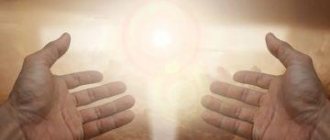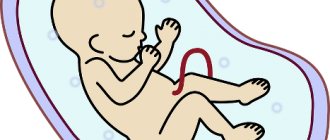Tremor is a movement disorder. From the outside it looks like small vibrations of certain parts of the body. Hand tremors are widespread - these involuntary movements greatly complicate the lives of patients, because they do not allow them to perform simple actions, and often even take care of themselves, although technically this condition does not cause a danger to life and does not shorten it. This problem is typical for people over 65 years of age, and the older the patient gets, the more it progresses. But this depends on the specific disease - often tremor, which arose under the influence of certain factors, also disappears after eliminating these same factors.
Varieties
Tremors can be of different types, but first let’s distinguish between primary and secondary. Primary, essential tremor occurs independently, and secondary - in the form of a reaction to various diseases, the administration, or the effect of certain medications.
You should also distinguish between physiological and pathological tremor. The first is considered normal and occurs in healthy people - for example, with severe anxiety. It is characterized by a small range of movements, as well as the ability on the part of the person himself to remove this state - simply to calm down.
Pathological is caused by various disorders in the nervous system. It is divided into a large number of different subtypes - for example, there is the so-called cerebellar variant.
It is necessary to highlight one more group of such disorders: motor and at rest. Moreover, motor tremors also come in several varieties. We won’t describe everything, but let’s give an example of kinetic - this is a tremor that is observed when trying to perform an action. If it is not targeted (conditionally, any), we are talking about a simple kinetic version of the state. When the action is purposeful (for example, the patient wants to take a cup), and the trembling itself intensifies as it approaches the goal, they speak of intention tremor.
Types of tremor
Neurologists classify shaking hands according to the types of occurrence:
- Physiological tremor. It is not uncommon for hands to begin to shake due to nervous tension, stress or muscle strain.
- Anxiety disorders. With a neurological cause of tremor, other problems come with it: insomnia, nausea, nervousness, increased fatigue. As you might have guessed, the cause can be severe stress.
- Thyroid gland dysfunction. Tremor can be one of the symptoms of thyrotoxicosis. Other signs indicating this disease are weakness, causeless anxiety, rapid heartbeat, shortness of breath, and sleep disturbances.
- Essential tremor. In this case, the hands shake in a certain position. Most often, this tremor is inherited and does not have serious consequences.
- Parkinson's disease. This is a very serious disease that is common in older people. With it, the patient's hands shake during calmness. Parkinson's has a number of associated symptoms: loss of balance, deterioration of coordination, development of memory loss, amnesia and others.
Causes
There are many causes of hand tremors:
- Genetic factor (determines the essential form of the disease).
- Parkinson's disease.
- Some pathologies of the endocrine system.
- Metabolic disorders. For example, Wilson-Konovalov disease may be the cause.
- Cerebral vascular lesions are different types of strokes.
- Diseases due to infections. This includes epidemic encephalitis.
- Various space-occupying formations: from tumors to hematomas.
- Taking certain medications. The shaking effect is caused by some types of antidepressants and antipsychotics.
- Serious poisoning - carbon monoxide, salts of heavy metals.
- Withdrawal syndrome that occurs during withdrawal of a substance to which a person is dependent. These are drugs, alcohol, some strong medications.
These are not all factors - in the practice of doctors there are others that can cause tremors of the limbs.
What to do if you feel faint: first aid
All first aid techniques during a pre-fainting state are aimed at preventing the onset of full-fledged fainting. Let's look at all the necessary steps in detail.
- The first is to provide oxygen access to the room, and, if possible, take a comfortable position. Remove all objects that put pressure on the chest and neck (scarf, tight collar, tie). To better saturate the blood with oxygen, it is necessary to take rhythmic inhalations and exhalations. If the breathing process is difficult, ammonia will help. A sweet, warm drink in the form of tea also helps relieve an attack. If you suspect evaporation of harmful substances in the room or a gas leak, you should quickly leave the building and go outside.
- After the crisis has passed, the body must be provided with the required amount of fluid, which involves consuming at least 2.5 liters of water per day. Taking drugs such as Asparkam and Panangin will normalize the balance of electrolytes in the blood and ensure normal blood supply to all organs. And, of course, it is necessary to establish the cause of the pathology.
- If you have chronic fatigue syndrome, you must take the necessary vitamins and minerals and ensure all conditions for normal work and rest. In case of hypotension or anemia, the cause of this condition should be immediately determined. Since some pathologies require immediate medical attention.
Everything we talked about in this article needs to be known and remembered by every person. Because presyncope attacks develop suddenly, which can pose a serious threat to life. After all, at this moment a person can cross the roadway or drive a car. The most important thing when providing first aid to yourself or your loved ones is to prevent full-blown fainting from developing.
Primary appointment with a neurologist: 1850 RUR.
Sign up Online 5% discount when registering from the site
Diagnostics
Determining the problem itself is quite simple - this can be done as a result of a survey, as well as during a routine examination of the patient, using simple experiments. Another thing is that it is important for specialists what exactly underlies such a reaction of the body. Here it is necessary to exclude diseases that may be dangerous for the patient.
Diagnostics necessary for subsequent treatment of hand tremor include:
- Laboratory tests: general, hormones, calcium, glucose and a number of other substances. Also, with the help of tests, you can determine whether the tremor is associated with alcohol, drug intoxication or withdrawal syndrome. For a more complete picture, both blood and urine are examined.
- MRI of the brain. The examination may show ischemic or atrophic lesions, as well as other problems.
- Computer stabilography. This technique, using a variety of tests and a special apparatus, allows us to understand more accurate characteristics of the deviation.
A number of other studies are also carried out: tremorometry, electromyography, angiography. In some cases, molecular genetic tests are required. The specific diagnosis will depend on the situation: the patient’s condition, age, completeness of information about his diseases, etc. Different people may require completely different examinations.
Prevention of hand tremors
Simple, but extremely effective recommendations will help avoid the development of the disease and generally have a positive effect on the condition of your body:
- Start playing sports, walking outside and any other type of muscle activity;
- Find time every day to rest and relax;
- Practice fine motor skills with your finger, take up crafts or a similar hobby;
All of the above tips do not exclude visiting the dentist and identifying the cause of shaking hands. For this disease, we strongly recommend visiting a specialist to rule out or detect serious diseases.
Treatment
If the cause that underlies the disease is removable, treatment of tremor begins with this. Then conservative therapy comes into play, which includes:
- Improving quality of life by changing habits and environment. Patients need to avoid stress and also surround themselves with more comfortable and safe things. For example, knives should have dull edges so that a person cannot hurt himself. If a person is often left alone at home, an emergency phone should have voice control.
- Exercise therapy, massages, and additional treatment options such as reflexology. Also, many patients are recommended to use special braces that are attached to the wrists and make movements more rigid and limited.
- The use of various medications, which are selected exclusively by a doctor after a thorough diagnosis. Under no circumstances should you prescribe something for yourself.
If conservative methods do not help, patients are offered surgical intervention. This is relevant in the case when tremor can make a person disabled. Then, during the operation, special electrodes are implanted into the body - by influencing the brain with special impulses, they help to align movements.
If you want to cure hand tremors or get detailed advice on this issue, neurologists at the Meditsina JSC clinic in Moscow are ready to see you at a convenient time and provide professional assistance.
How to get rid of hand tremors
Depending on the type of tremor, there are various treatment methods; below are general tips for getting rid of this ailment:
- Reduce your stress levels. Make a plan to avoid conflict situations and not fall out of balance. Try to master breathing techniques, meditation, and if necessary, consult a psychotherapist.
- Start taking sedatives. You should not select strong medications on your own; only a specialist can prescribe them. Consider plant-based sedatives.
- Try to drink less coffee and energy drinks, they seriously weaken the nervous system.
- A stable daily routine and normal sleep patterns help normalize the condition.
- Give up bad habits such as alcohol and smoking.
- During an attack of tremor, pick up something heavy, unless there is a physical reason for the occurrence.
- If you are undergoing treatment, check with your specialist about any side effects that may cause tremors.
- Do not self-medicate.
Why can muscles twitch?
A short and rare occurrence of twitching can be caused by a lack of vitamins and minerals in the body such as B, D, potassium, magnesium and phosphorus. It also occurs in case of insufficient fluid intake and excessive physical fatigue. To cope with the problem, first of all, you should avoid stressful situations, unnecessary worries, limit physical activity to reasonable limits, and organize quality rest and sleep. Drink more water and balance your diet, if necessary, take additional vitamins.
Physiological imbalance in the body
Seizures can be caused by the consumption of alcohol, drugs, energy drinks and medications. The human central nervous system suffers from such substances and malfunctions. As a result, deviations occur in the human musculoskeletal system. Watch the amount of harmful drinks you consume and be careful about taking medications.
Injury or being in an uncomfortable position for a long time can also serve as a source of disorder in the functioning of muscle tissue and cause spasm. When working sedentarily, take the time to do a little physical warm-up: stand up, walk around, move your arms and head.
Other musculoskeletal diseases that cause muscle cramps
Two dangerous pathologies occupy the leading positions in the list of dysfunctions of the respiratory system:
- Osteochondrosis
Changes in the vertebrae and intervertebral discs lead to degenerative changes in the spinal column and can manifest as twitching of muscle tissue. This is a serious signal to consult a doctor, as the result may be irreversible. People who lead a sedentary lifestyle, have underdeveloped muscle mass, flat feet, and an unhealthy diet are prone to such disorders. A pinched nerve between the vertebrae that connects the skull to the neck can cause the head to twitch with increasing intensity due to a stressful situation. When the disease is left without medical intervention, it will develop to the displacement of intervertebral discs, the appearance of cracks in cartilage and hernias. At the beginning of the pathology, only the neck and head twitch, then the arms and shoulders. The greater the physical activity, the more clearly the deviation from the norm is expressed. Next, the patient experiences sensations of heaviness and burning in the muscles, unstable blood pressure, increased sweating, noise in the head, headaches more often, and sometimes dizziness. A characteristic sign of osteochondrosis is numbness of the upper body. At the initial stage of development of the pathology, any physical activity is accompanied by discomfort and crunching in the joints, and in the advanced stage, thinning of the arms and legs occurs, limited movement, fusion of the vertebrae and deterioration of blood supply to the brain. To maintain health and performance, you should immediately consult a doctor.
- Amyotrophic lateral sclerosis
This disease causes degenerative damage to the motor neurons in the medulla of the back and head. It has several names such as:
- lateral or lateral amyotrophic sclerosis;
- motor neuron disease;
- motor neuron disease;
- Charcot;
- Lou Gehring.
As a result of the disease, paralysis occurs, accompanied by muscle atrophy. LAS is a poorly understood disease, affecting two per hundred thousand people per year. The reasons are not clear, they are observed after the age of thirty, and do not appear upon reaching fifty. The first symptoms of such a rare but dangerous disease may be involuntary contractions of the muscles of the musculoskeletal system. Development comes from the bottom up, starting from the feet. Reflex testing shows a rhythmic contraction when touched. Patients have difficulty moving, as they feel weakness in the lower extremities and experience discomfort in the knees and feet. Less commonly, similar symptoms are found in the upper extremities, a feeling of weakness in the arms and shoulder girdle, problems with fine motor skills and finger mobility. It is quite difficult to make a correct diagnosis at the early stages of the development of pathology, because the symptoms are not much different from less severe abnormalities in the functioning of the musculoskeletal system.
What symptoms should you contact a medical facility for?
- relaxation and trembling of muscles;
- loss of coordination;
- increased sensitivity of the knees and feet;
- weakness in the foot;
- mood swings, irritability;
- problems with diction and difficulty swallowing.
Treatment methods, developments of scientists
Unfortunately, serious diseases such as lateral sclerosis cannot be treated. Currently, only a drug has been found that slows down its development, called Riluzole. Developments are underway, but it is not yet known when they will bear fruit. The development of this disease is due to the presence of a defective gene; a way to block its effect on the body has not yet been found. Doctors can prolong a patient's life and alleviate his suffering by using muscle relaxants. To build muscle, patients are offered an anabolic drug. A positive effect was obtained from stem cell transplantation. It is good at accelerating the growth of nerve fibers and restoring neural connections, which counteracts the loss of neurons. New treatment methods are being actively developed in Japan. For milder diseases, it can be noted that timely visit to the clinic, maintaining a healthy lifestyle, including proper nutrition, taking vitamins, quality rest and exercise will be the key to spinal health
and the musculoskeletal system as a whole.
Author: K.M.N., Academician of the Russian Academy of Medical Sciences M.A. Bobyr
Symptoms
Panic attacks occur during the deep sleep phase - between 2 and 4 am. In rare cases, this condition occurs immediately after falling asleep.
Symptoms of panic attacks during sleep include the following:
- sudden sudden awakening from a feeling of anxiety and intense fear;
- lack of air;
- difficult intermittent breathing;
- increased sweating;
- tachycardia;
- increased blood pressure;
- feeling of paralysis or stiffness of the body;
- dizziness;
- chest pain;
- chills, numbness of extremities.
In time, a night attack lasts from 10-20 minutes. Due to paralyzing horror, a person is unable to call for help. Sometimes awakening occurs from one's own scream. The darkness in which a person finds himself only aggravates his condition. Therefore, panic attacks at night during sleep have more severe symptoms than during daytime attacks.
In the first 5-10 minutes after a sudden awakening, confusion and disorientation in space occurs. Then comes awareness of the situation. The person is trying to calm down his pulse and calm down. Feelings of anxiety and fear may persist for several days, intensifying in the evening. This is due to the fear of falling asleep and again falling into an overwhelming nightmare.
A panic attack during sleep also has intrusive thoughts (so-called obsessions). There is a fear of serious illness, death, heart attack in a dream. Without appropriate treatment, attacks may become more frequent and occur every night.
Psychotherapy for feelings of trembling and vibrations in the body
Most often, people begin to resort to the help of psychologists and psychotherapy. Psychotherapy explains to a person the true origin of these sensations. This understanding often temporarily reduces the urgency of the problem and symptoms decrease. However, even if you realize that all these problems appear only in your mind and they have nothing to do with your physical health, the disease itself will not go away. It will dull temporarily, but with any, even minor stress or physical activity, it will begin to return.
How to properly deal with the feeling of trembling and vibration in the body
In order to reliably overcome the sensations of trembling or vibrations in the body, it is necessary to understand that under the influence of external unfavorable influences on the nervous system, a failure of the metabolic processes of the brain has occurred. In order to restore these processes, special drugs are required.
We use special complex therapy, which includes neurometabolic therapy, which restores biological processes, and special medical psychotherapy, which helps the nervous system restore normal mental reactions.
The set of measures also includes an individual approach to each person, as this is associated with differences not only in the body’s metabolic processes, but also in differences in the pattern of mental reactions. Each person requires the development of an individual therapeutic plan.
Can the problem be solved at home?
Tremor is a consequence of chronic alcoholism stages 2-3. At home, you can eliminate this unpleasant symptom by giving up alcohol, getting a good night's sleep, and taking appropriate sedatives . But often the problem is that a person is not able to give up alcohol for a long time. He stops drinking while he is in fear for his life, as large tremors seem to be a very dangerous symptom. In some cases, the patient “pounds” and develops chills.
If an alcoholic does not want to go to a clinic, he can take measures at home:
- Drink as much clean water as possible;
- Take enterosorbent to remove toxins;
- Consume fermented milk products that neutralize toxic substances in the intestines;
- Give a light massage of the limbs;
- Take anti-hangover medications from the pharmacy.
The peculiarity of alcohol tremors, which manifests itself during a hangover, is that it weakens when taking new doses of alcohol. The patient tries to alleviate his condition by continuing to drink, which leads to binge drinking and new disorders in the body. One-time measures will not get rid of the problem forever. Trembling will not appear if you eliminate the very cause of its appearance - alcohol dependence. The obstacle is usually a psychological factor. The man was given a drink, the ethyl alcohol was removed from his blood, he felt better, the fear went away, so he soon begins to drink again.
You should not take tranquilizers and strong sedatives on your own, especially if you are intoxicated. The load on the liver and kidneys increases , and the likelihood of side effects increases.
If the patient decides to fight this condition on his own, it is necessary to exclude not only alcohol, but also fatty foods, energy drinks, strong coffee, increase physical activity, take a course of vitamins, and adjust nutrition.
Large-scale tremors may be a consequence of dopamine . Antidepressants and natural stimulants for the production of this hormone: chocolate, seafood, etc. will help get rid of it.
A feeling of shaking and vibration often accompanies
- muscle tension
- difficulty concentrating
- increased heart rate
- extrasystoles
- uncontrollable shaking
- feeling of fear
- fatigue and muscle pain
- headache or migraine
- nausea, vomiting, or loss of appetite
- rapid breathing
- excessive sweating
- feeling of tension, irritability
What to do if there is a feeling of trembling or vibration in the body
The sensations of trembling, vibration, and buzzing that are caused by anxiety are not dangerous. Other accompanying sensations will not cause harm. However, they can significantly reduce a person’s quality of life and create discomfort. Sometimes such symptoms can lead to a loss of control over one's own body. In impressionable people, such sensations can often develop into panic disorder.
Therefore, based on many years of experience, we highly recommend. If you begin to feel trembling, vibrations in the body or its individual parts, at some specific moments. Perhaps these sensations do not let you go throughout the day. Don't start panicking.
It is necessary to contact the specialists of our clinic as soon as possible. We will be able to conduct a special diagnosis of the nervous system, accurately determine the true causes of the sensation of yeast or vibrations and carry out the necessary therapy.
When should you see a doctor if you have a tic?
Every person can experience involuntary muscle contractions under great emotional stress (for example, eyelid twitching). If such manifestations are observed within 2 weeks (including repeated single tics), then this is already a disease. Tics that last less than a year are called transient (temporary). If a tic persists for more than a year, it is called chronic. Simple transient tics usually go away on their own. However, it is still necessary to see a doctor to reduce the risk of the tic becoming stronger and stronger.










